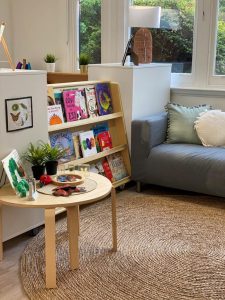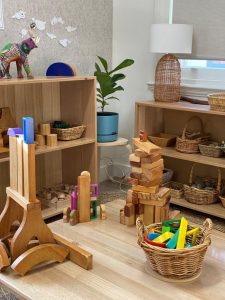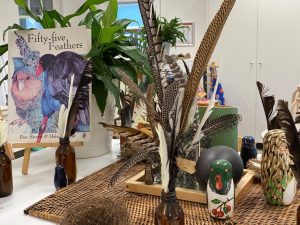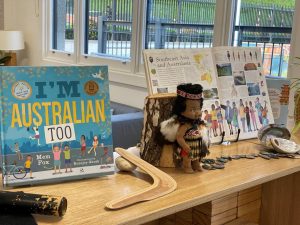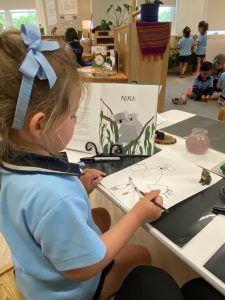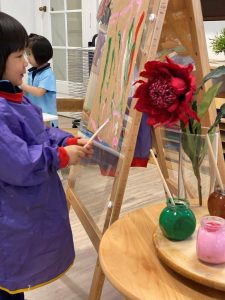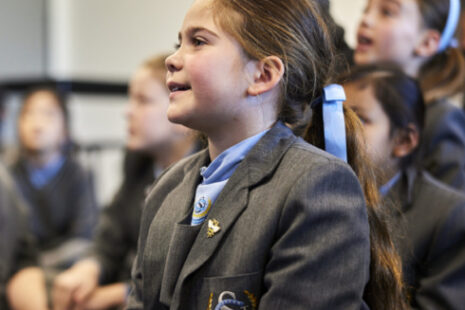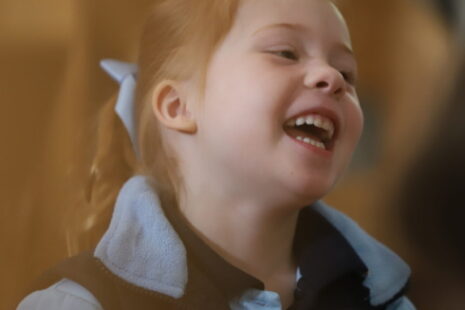Inspiring learning spaces for young children

At the heart of St Catherine’s Early Learning Centre (ELC) philosophy is an acknowledgment of the importance that the physical environment plays in a child’s learning and development. Contemporary theories and research informed by the Reggio Emilia approach recognise and value the environment as the ‘third teacher’ and it is seen as an integral element of the learning process.
As the learning spaces have the potential to influence what and how children learn, these spaces support and promote wonder, curiosity, inquiry and research. Authentic artefacts, cultural provocations, and interesting items from the natural world are used extensively throughout the learning environments. They provide both a rich visual stimulus to prompt children’s wonder and questioning, as well as opportunities for hands-on, sensory discovery.
Active participation in the learning environment develops a child’s understanding of concepts, and expands their thinking and inquiry processes. These skills are necessary for lifelong learning. “Children can challenge and extend their own thinking, and that of others, and create new knowledge through collaborative interactions and negotiations.” ACECQA, National Quality Framework, Quality Area 3, 2018
The concept of belonging is linked to a child’s sense of identity, and the physical environment contributes significantly to both identity and belonging. Factors such as the children’s lives, cultural backgrounds and their needs are reflected considerately in the learning spaces through the materials, resources and decorations that are used. This provides a feeling of ‘homeliness’ and leads to a sense of comfort, security and belonging. The learning environment is inclusive and accessible to all.
Much thought is put into the planning and design of the learning spaces to foster interaction, encourage communication and support relationships. Areas for small group projects, social interactions and conversation are built into the learning environment. “We place enormous value on the role of the environment as a motivating and animating force in creating spaces for relations, options and emotional and cognitive situations that produce a sense of wellbeing and security.” Loris Malaguzzi, Reggio Emilia
Learning spaces are designed to promote each child’s sense of agency where they can be active contributors to and have an influence in their world. Children are invited to contribute resources and items of interest to the classroom environment and engage in discussions regarding changes or modifications to the environment. Experiences and materials are open-ended and offer flexibility. In this way, the environment promotes decision making and choice and demonstrates respect for the children’s emerging skills, competencies and independence. The children are encouraged to take ownership of and responsibility for the learning environment as part of the community.
The concept of beauty is reflected in the learning environment to support self-discovery, exploration and collaboration. As the environment is designed in a calm, well organised and aesthetically beautiful manner, elements such as light, colour, sound and motion are considered. “Being surrounded by these elements can spark children’s imagination, focus their attention and calm their spirits.” Curtis & Carter, 2003.
Our recently refurbished ELC learning spaces were designed with these elements in mind. As a result the spaces are an incredibly calm, light filled, wonderous environment for our young learners to actively play, learn, investigate and discover. The role that an inspired learning environment plays in a child’s learning, development and wellbeing cannot be underestimated.


